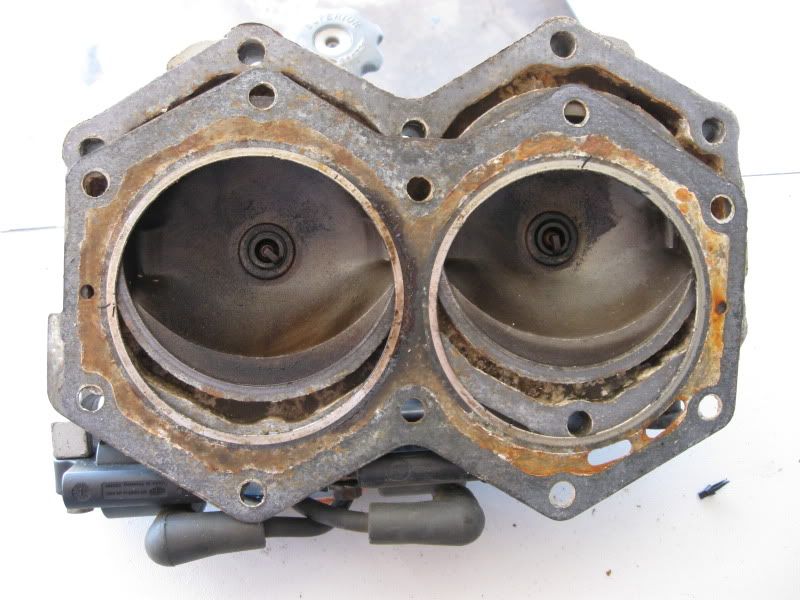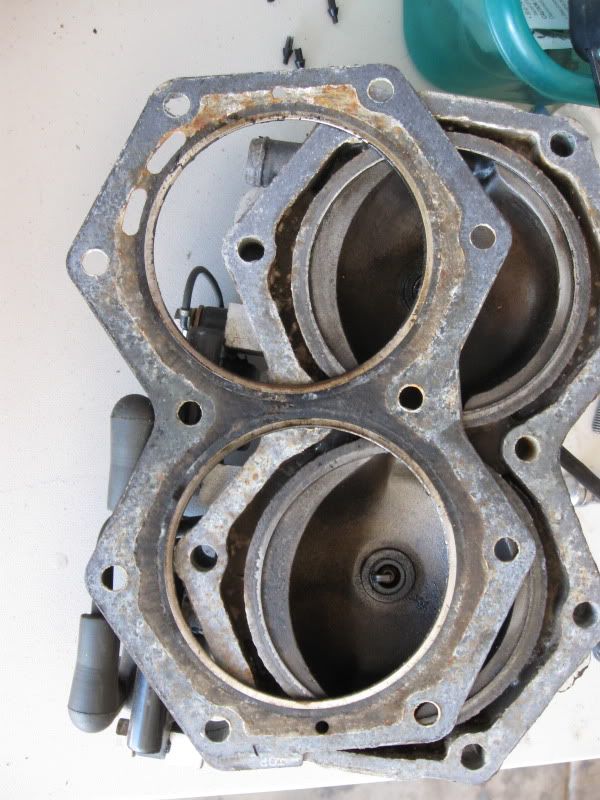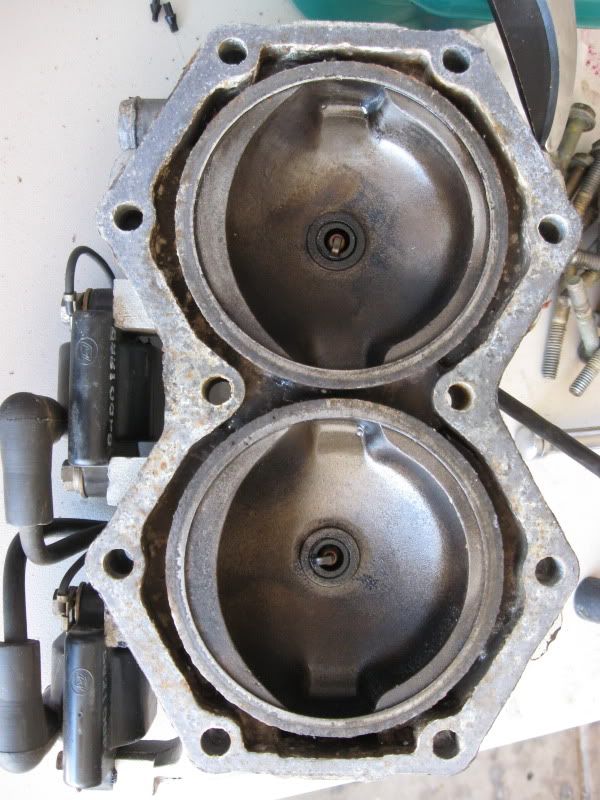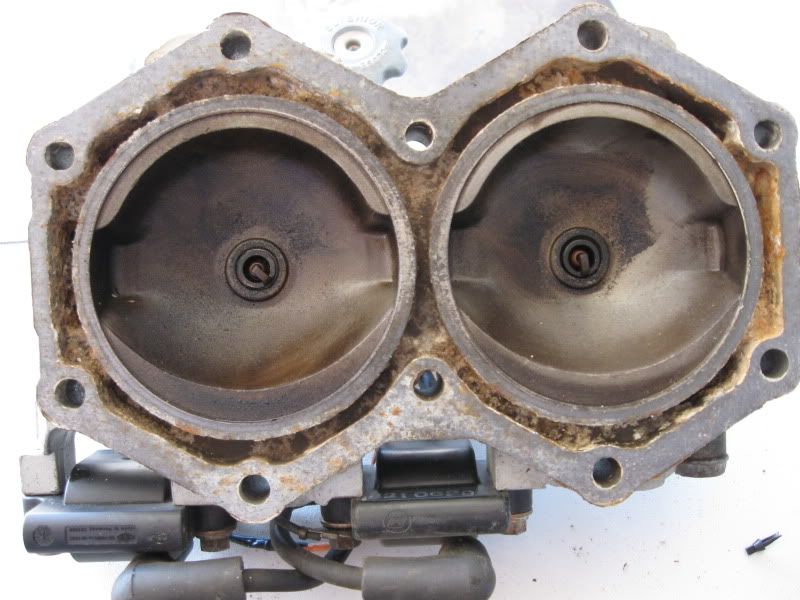ScottinAZ
Master Chief Petty Officer
- Joined
- Jun 25, 2009
- Messages
- 865
OK, first off, the engine in question is a 1982 Evinrude 115, (E115TLCNB) that has had an idling issue since purchase. I pulled the plugs, and had evidence of what I thought was water on the plugs, (beaded up liquid on the surface) so I pulled the heads today. Also, I did a compression test on it about a month or so ago, and got 115-120 on all holes. I dont remember the exact values, but they were above 110, and even on all holes (within 10% at least)
What I found was one head gasket that was obviously poorly sealing (scorched fire ring) but no obvious damage to either heads or block. Just for giggles, I worked the engine through a full revolution and checked the pistons for looseness. I can wiggle all of them a bit, but to my eyes (4 stroke automotive) it seems excessive. Are 2 smokers built with looser tolerances to compensate for the lower operating temperature?
The cylinder walls are good, no signs of metal transfer or scoring, the crosshatch is still there, and there is no appreciable ridge in the bores. There is signs that there has been a bit of water in the cylinders above the top ring, but nothing more than a light water discoloration of the metal, no active rust or pitting.
My take for now is that I need new gaskets, the heads need to be surfaced, and the heads properly torqued, the engine run, and then retorqued. Im just not sure how much play is acceptable in the pistons. Keep in mind that the engine just wouldnt idle worth beans when warm, and that there were no funny, "i'm gonna blow up in 5 seconds" noises coming from the motor.
What is the group consensus here??




What I found was one head gasket that was obviously poorly sealing (scorched fire ring) but no obvious damage to either heads or block. Just for giggles, I worked the engine through a full revolution and checked the pistons for looseness. I can wiggle all of them a bit, but to my eyes (4 stroke automotive) it seems excessive. Are 2 smokers built with looser tolerances to compensate for the lower operating temperature?
The cylinder walls are good, no signs of metal transfer or scoring, the crosshatch is still there, and there is no appreciable ridge in the bores. There is signs that there has been a bit of water in the cylinders above the top ring, but nothing more than a light water discoloration of the metal, no active rust or pitting.
My take for now is that I need new gaskets, the heads need to be surfaced, and the heads properly torqued, the engine run, and then retorqued. Im just not sure how much play is acceptable in the pistons. Keep in mind that the engine just wouldnt idle worth beans when warm, and that there were no funny, "i'm gonna blow up in 5 seconds" noises coming from the motor.
What is the group consensus here??




Last edited:




















